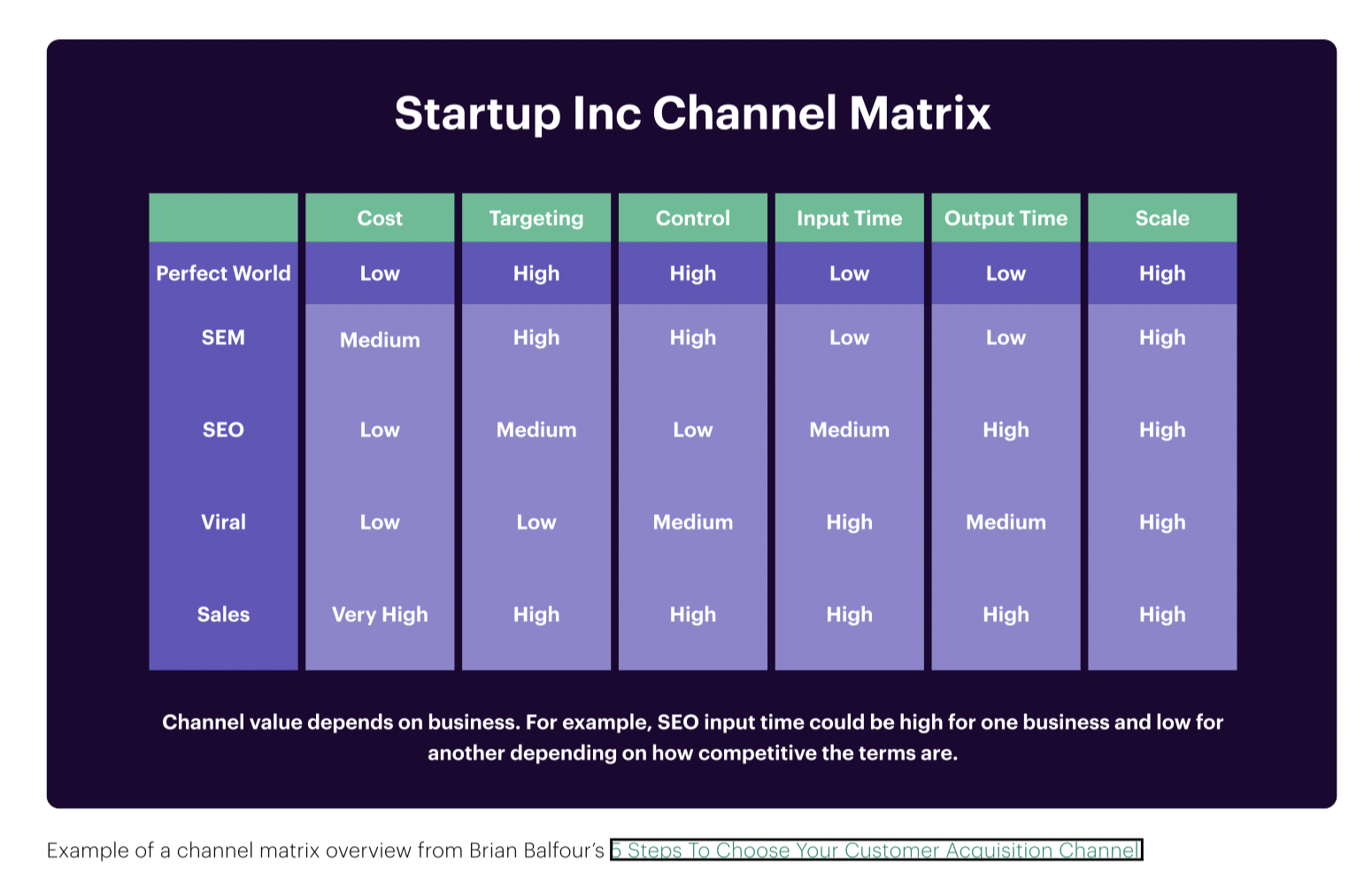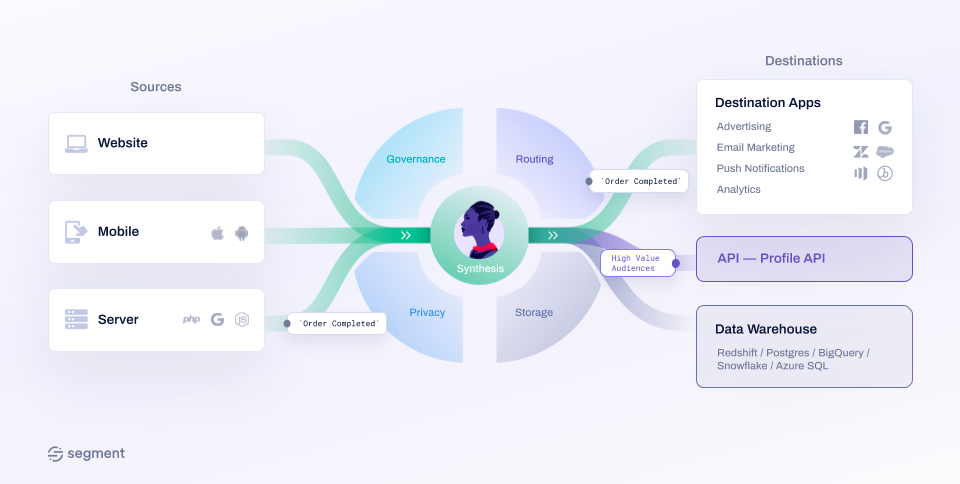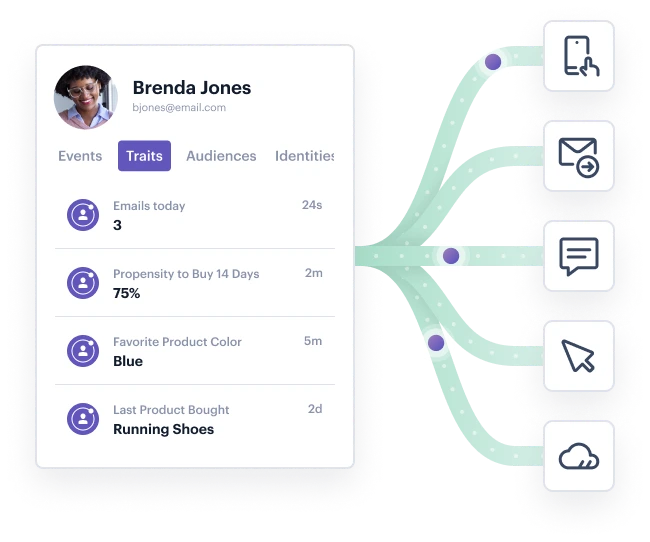How To Get Started With Multichannel Marketing Automation
Here we go over what multichannel marketing automation is, its benefits, and how to automate.
Here we go over what multichannel marketing automation is, its benefits, and how to automate.
Keeping on top of various marketing channels can be a significant challenge. Not only do professionals need to allocate their marketing spend appropriately, but they also need to understand each channel’s ROI (and adjust their strategy accordingly).
Automation has become increasingly useful in helping teams optimize their time and money – and multichannel marketing is no different. Below, we detail how to incorporate automated workflows and processes into your campaigns to stay ahead of the curve.
Multichannel marketing automation uses technology – often software as a service (SaaS) – to plan, execute, and measure marketing tasks. Data is a key component of this technology, providing insights into what’s working and what’s not for each channel in the marketing plan.
Research shows that marketers are already saving 25 hours a week using automation, demonstrating that they understand the value it brings to their jobs. How exactly does automation do this?
Automation helps businesses save money by helping them gain insights at a faster rate, and reduce the repetitive tasks that can often bog down employees. Take Domino’s as a prime example. The well-known pizza chain was able to decrease the cost of customer acquisition by 65% by investing in technology that helped them scale data collection and cleanliness, and create personalized customer experiences for 8 different cohorts they identified.
With more precise ad targeting, and a better understanding of when customers were most likely to buy, Domino’s was able to fine-tune its advertising strategy and increase return on ad spend on Google ads by an incredible 700%.
Spending more time on a project doesn’t necessarily mean you’re doing it better. Marketing automation removes many cumbersome tasks from a typical workflow. And if harnessed effectively, it frees professionals to do more meaningful, human-centered work.
For example, DigitalOcean was able to create campaigns at a 5x faster rate by empowering its non-technical teams with unified, clean, and consistent customer data. Before, DigitalOcean’s marketing team was dependent on an engineer or analyst exporting an audience list, which slowed things down considerably. Now, they’re able to leverage Twilio Engage, which helps automate key aspects of audience and profile creation, and makes data more accessible across the organization for activation.
Creating an individual message for each customer is effective but very hard to do for thousands of customers – unless you allow automation to step in. If sending out an SMS text based on what’s in an abandoned cart works well for one shopper, imagine what it can do for your entire database of prospects, loyal customers, and vendors.
Certain marketing automation tools allow you to capture data in real time, so businesses don’t have to wait to run a month-end report to see if they missed the mark. The data is timely and relevant and can be used in many ways.
Marketers can see the success of individual segments across platforms, compare channels, review marketing spend, and look for trends before investing additional money. And certain tools can further leverage this real-time and historical data to make predictions about customer behavior.

If you’re already using a multichannel marketing approach, automating it ensures you get the most out of all the data you collect. Careful planning will save you time in the long run and help you select the right tools for the job.
TikTok, SMS, email, push notifications, and YouTube are just a handful of channels brands use successfully to sell their products daily. However, just because a channel becomes available doesn’t mean you should hop right on it. Know your target audience and the channels they’re accustomed to and love best. Consider how your business goals can align, and then honestly assess if you can make the content type appropriate for that audience. The time, talent, and resources needed vary greatly between content types.
If you already collect and analyze data, you have a head start on understanding customer behavior on each channel; use what you know to guide your decisions.

Understanding channel value with Brian Balfour's matrix
Buying often begins well before customers reach your website or store. Use what you know about their channel engagement to anticipate how they find you and what challenges they may experience when engaging with your brand.
Ask questions like, “How do customers engage with this channel?” “What point in the buying process are they engaging?” and “How long does it take to convert?” Creating a customer journey map can help you visualize different flows and identify potential points of friction.
Your options for a marketing automation tool are wide and varied, with dozens of notable platforms available to companies of all sizes. All marketing automation tools are not created equal, however.
Some need extensive coding resources to get up and running; others don’t support the integrations you know and love. Ask for a demo early on in your research, and be honest about the shortcomings of any tool before committing,
Where is your data coming from? How do you collect it? This is the best time to fully understand all of your disparate data sources and how they pass data to your platform. If you have a well-documented data tracking plan, this step will cost you less time and fewer resources.
Your website is where much of the personalization from your multichannel marketing will appear to customers. The data – collected, unified, and analyzed – now informs what messaging appears on your site, so how you transmit that data is very important.
Your software tool is in place, and the data is coming together from all your sources to create personalized messaging across your channels. This is just the start of what your software should do. With all of that data unified into one view, you can see what’s working and what’s not. In addition to measuring data, you can now more easily test different messages to see what resonates with your audience.
Here’s how to focus on the metrics that matter for your business.
Segment's CDP brings a 360-degree customer profile into view for all of your marketing efforts. The platform offers enhanced multichannel marketing capabilities to create more accurate customer segments and has over 450 pre-built integrations.

Marketers don't have to update customer records manually or deal with clunky data imports. Data is streamed seamlessly into the CDP from places like Shopify, Facebook ads, and Salesforce to reflect customer behavior as it happens. With automation, triggers create action across as many platforms as you wish. From SMS and email to in-app notifications, your brand voice consistently goes to the places where your customers are most likely to hear it.
Twilio's Engage is a powerful combination of the Twilio API technology and the Segment CDP. By setting up the segment targets you want, customers are identified as soon as their behavior matches the parameters. Customers receive personalized offers and promotions that are most likely to help them convert the moment they are ready to buy.

Schedule a free demo to see how recipes boost CDPs capabilities and join the 25,000 companies using Segment today.
Connect with a Segment expert who can share more about what Segment can do for you.
We'll get back to you shortly. For now, you can create your workspace by clicking below.
Multichannel marketing engages with each channel’s audience individually, trying to get them to take action on a message. Omnichannel marketing uses a more holistic approach in which a customer’s experience across channels is integrated and seamless.
Marketing automation aims to maximize marketing efficiency and results by automating several aspects of the marketing workflow. Tasks include creating messaging, sharing messages, analyzing data, and repeating common steps without human intervention. The more sophisticated tools use artificial intelligence (AI) and machine learning (ML) to optimize and adjust campaigns automatically.
Twilio Segment's CDP combines data from different sources to create unified and detailed customer profiles that update in real time. Leveraging these profiles, businesses can understand which channels their customers prefer, how they like to be engaged with, and even calculate things like someone’s propensity to buy. Better yet, Segment allows companies to launch these data-driven marketing campaigns at scale.